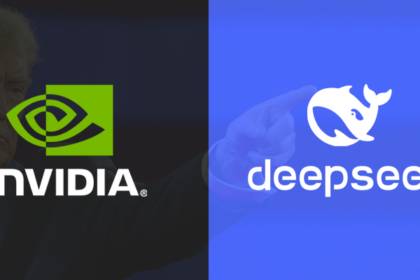Known for his proficiency in creating intelligent systems that propel corporate success, Mike Zhou is a prominent figure in the fields of artificial intelligence and machine learning. Mike, who has a solid background in data science, engineering, and mathematics, has been at the forefront revolutionary AI projects, such as developing the most cutting-edge customer-facing AI system in the accounts receivable management sector. His leadership strategy relies on assembling high-caliber data science teams, encouraging cooperation between technical and business stakeholders, and assuring that AI-driven insights translate into real-world effect.
Mike discusses his approach for developing and growing data science teams, striking a balance between technical proficiency and commercial savvy. Mike provides insightful advice for leaders navigating the changing terrain of data-driven decision-making, covering everything from the essential traits he seeks in top personnel to tactics for coordinating AI initiatives with more general business objectives.
How can you strike a balance between technical know-how and commercial savvy when putting together a data science team?
What a great way to start! Along with meeting job description requirements, I look for team members that possess as many of the following qualities as I can:
Horsepower of the intellect:
With the arrival of AI answers, it’s now even more vital to have team members that can think deeply and solve challenges intellectually.
Gaining recognizing about data science is not too difficult. Even yet, it can be challenging to learn to be a professional and elegantly address an issue in a new environment.
Relentless Curiosity:
I search for candidates with an inherent curiosity about their area, discipline, and adjacency. In my experience, there is a strong link with this quality and the attainment of exceptional results using a new technique. Given the discipline’s emphasis on research, this is especially pertinent to data science.
Capacity to Tell Stories:
This skill should definitely exist across different team members and line managers, but it is not required to be present in every team member. One of the most valuable skill sets is the ability to communicate difficult ideas and market data science to an outside audience. It enhances teamwork and output in addition to increasing comprehension and acknowledgment of the work being done.
How can data scientists, engineers, and company executives work together to make sure that insights derived from data have a real-world impact?
Throughout my career, I’ve held a variety of positions where data scientists worked both individually and in teams or tribes with other disciplines. The ideal structure varies greatly depending on the situation.
At the leadership and management levels as well as the individual contributor level, there should be a shared knowledge of the goals. I’ve also witnessed how successful it can be to align both monetary and non-monetary incentives to make sure that technical and commercial workers are working together to achieve the greatest possible outcome for their company. It makes sense to think about making sure technical staff incentive structures are comparable to those of commercial stakeholders, depending on how much they can influence the commercial outcomes.
Encouragement of cross-functional participation is also crucial, as team members from various disciplines view themselves as a single unit working toward a common goal.
Which approaches to leading and growing data science teams while preserving high performance have you found to be the most successful?
Processes are frequently disregarded, and technical development teams are more likely to ignore process setup and documentation when they are in the middle of a build. However, before rapidly adding more team members, it is crucial to make sure the proper procedures are in place. I have witnessed small teams function effectively but lose productivity as they expand.
It’s also critical to balance the amount of time spent on process and infrastructure setup. Onboarding new team members once pertinent procedures have been established, however, usually makes sense so that they may function effectively without requiring the specialized knowledge of a small number of original team members. The resulting disparity in working methods and understanding frequently prevents scaled teams from realizing their full potential. Establishing procedures that new team members are expected to adhere to will facilitate their integration into the team’s operational rhythm. Another important factor is the leadership structure.
For a high-performing team to successfully scale, this framework is essential. I choose to work with line managers that are very skilled in their field. Technical people with experience in innovation are likely to be more effective than managers who function more as professional project coordinators without the skills or experience to assist the team in executing. When it is feasible, I frequently train internal applicants for managerial roles.
Read Also: Trump & Nvidia CEO Discuss AI Chip Exports & DeepSeek’s Rise
How do you support team members’ growth and what part do professional development and mentoring play in your leadership style?
Leaders’ support and team members’ dedication are essential for effective professional development. I constantly try to implement two main goals.
Mentorship at All Levels: I have purposefully implemented and promoted mentorship from both tenured colleagues and direct line supervisors in the teams I have formed. This guarantees that team members are gaining knowledge about their present positions and potential career paths.
Structured Learning: Team members in the data science field must invest time in learning and exploring. Members of the team must be able to dedicate time to self-education. This might be a project that lets the team members try out a new technology or self-paced online courses. Fostering a culture of synchronous peer-to-peer learning also requires knowledge-sharing sessions on how a technology or strategy has been used for a specific internal project.
How can you make sure data science initiatives add quantifiable value by coordinating them with overarching business objectives?
I usually try to calculate return on investment (ROI) based on time spent in a business setting where creating value for shareholders is crucial. Measuring results and placing them in the perspective of the inherent variability of the craft is crucial, even though a significant portion of the work done by data science teams may be categorized as research and ROI may be challenging to calculate. This can be modified for various audiences inside the company.
The data science team’s reputation will rise if this is done successfully. It will assist leadership teams in making unbiased choices about data science investments in relation to business strategy. This brings us full circle to the reason I hold the contrarian view that having the ability to create stories is crucial for a data science team.
Could you give a concrete instance of a project where your leadership contributed to a significant data science implementation success?
I was engaged by my present employer to expand the core infrastructure and data science team. After the remit was expanded beyond data science, I eventually grew the team to include 10 data scientists and an additional 25 data analytics and data engineering personnel.
I have been extremely selective in my hiring process from the beginning, focusing on the three main attributes I value most: academic prowess, unwavering curiosity, and narrative skills. I’ve witnessed these traits manifest themselves to promote success in a variety of ways. First of all, because of the culture and direction I’ve established within the team, I’ve seen that people who share similar traits and like-minded persons often over-display their traits, which has a compounding effect that makes the team members bounce off and motivate one another. Second, it became easier to draw in similar talent to accompany us on our adventure. I frequently required candidates to meet several current team members during the interview process; several later told me that the team was the primary factor in their decision to accept our offer rather than others.
As a result, we produced numerous exceptional data science features and products and had extraordinarily extended tenures with a number of team members. Several of our clients praised us for being among the first teams in our sector to create and launch an AI-native solution.










